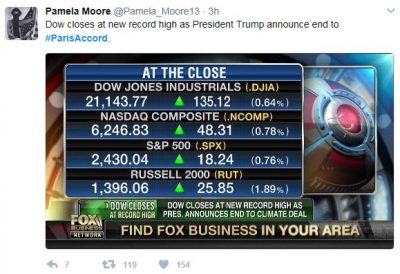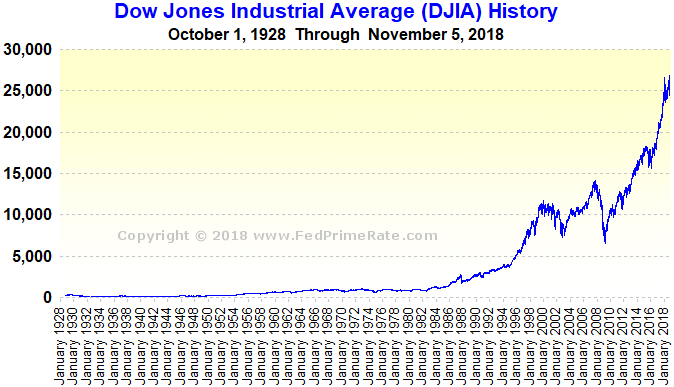Financial Turmoil, Plummeting Markets: Is the Longest Ever “Bull Market” Over?

Hindsight will best explain what only guesswork can do now. US equity market action in December has been uncharacteristically ugly for this time of year – the worst performance since December 1931 during the Great Depression.
Santa failed to arrive pre-Christmas like most often this time of year. Christmas eve market action was unprecedented – the worst ever for the Dow.
The day after the Wall Street Journal headlined “The Dow’s Worst Christmas Eve.” Bloomberg News was just as glum, headlining “US Stocks Endure Worst Pre-Christmas Day on Record.”
The Nasdaq was practically in bear market territory before Wall Street trading began yesterday. The S&P 500 approaches it, reaching a 20-month low.
The Dow is 18.77% off its October 3 high, the S&P 500 19.77% below its September 20 peak, and the Nasdaq is off 22% from its August high following Wednesday trading.
The global stock market and New York Stock Exchange composite indexes peaked in January. The Dow, S&P 500, and Nasdaq hung on, failing to roll over until late summer/early fall, high-fliers hammered most.
Noted investor Jeffrey Grundlach said bear market conditions arrived, believing we’re in one, saying:
“(W)e’ve had the first leg down, and the second leg down is usually more painful than the first leg down if this is indeed a bear market.”
He believes what’s going on isn’t short-term, things unlikely to be followed by resumption of the longest US bull market on record in the coming days or weeks.
Lots of factors contribute to bear markets. Economist Hyman Minsky warned about times like now. He constructed a “financial instability hypothesis,” building on the work of John Maynard Keynes.
It showed how speculative bubbles grow out of outsized greed, asset values collapsing in the end-game part of a seven-stage up-then-reverse journey downward.
It’s a “Minsky Moment,” what he called “revulsion” when euphoria turns to panic. Large investors bail out, followed by market meltdown. Whether it’s happening now will best be known in the weeks and months ahead.
According to Minsky, over a prolonged period of prosperity, investors pile into risk assets until lending exceeds what borrowers can pay off from incoming revenues.
When over-indebted investors sell to cover loan obligations, rising markets spiral lower. The final stage of bubble deflation happens when cheap credit ends. Downward momentum is much greater and faster than when markets are rising.
It’s going on now, the Fed raising interest rates and unwinding $50 billion in proceeds from its $4.5 trillion+ balance sheet monthly, reinvesting the rest – a reverse quantitative easing (QE).
The Fed’s balance sheet was around $800 billion at the start of the 2008-09 financial crisis. The longest-ever US bull market began in March 2009 – fueled by trillions of dollars of Fed created liquidity along with near-zero interest rates, not market fundamentals.
What stimulated years of speculative excess ended, the main factor driving markets lower.
Wall Street got an added boost by the great GOP tax cut heist last December, solely benefitting corporate America and high-net worth individuals, using their windfall to create greater wealth than already, including by stock market speculation – unrelated to stimulating economic growth and jobs creation.
In November, David Stockman warned of a steep market selloff, believing signs have been signaling it, saying:
“No one has outlawed recessions. We’re within a year or two of one. Fair value of the S&P going into the next recession is well below 2000, 1500 — way below where we are today.”
“If you’re a rational investor, you need only two words in your vocabulary: Trump and sell. He’s playing with fire at the very top of an aging expansion.”
“He’s attacking the Fed for going too quick when it’s been dithering for eight years.” After nine hikes, the Fed’s benchmark short rate is historically low at from 2.25 – 2.50%.
Trump’s trade war with China risks exacerbating a market selloff if it persists or worsens in the new year.
When sentiment turns negative, buyers hesitate stepping in (a so-called “buyers’ strike”). Things up or down have a way of taking on a life of their own.
Since October, negative sentiment outweighed positives. Treasury Secretary Mnuchin heightened market jitters by holding an emergency meeting of major Wall Street banks by phone – JP Morgan Chase, Citigroup, Bank of America, Goldman Sachs, Wells Fargo, and Morgan Stanley.
They comprise the president’s Working Group on Financial Markets, the so-called “Plunge Protection Team,” created in the aftermath of the October 1987 market crash.
One analyst called convening them to discuss market turmoil the “financial equivalent of yelling fire in a crowed theater.”
Others fear the most dismal December in memory so far may signal the bull market’s end, perhaps a significant selloff ahead in the new year.
Will 2019 bring greater market fire and fury? Only Cassandra was good at predicting future events.
I’ll stick to what’s ongoing domestically and geopolitically with a final comment.
Trump’s tenure so far has been hostile to peace, equity and justice for everyone at home and abroad.
It’s hard being optimistic for what lies ahead, things more likely to worsen, not improve – aside from what happens on Wall Street and world markets.
*
Note to readers: please click the share buttons above. Forward this article to your email lists. Crosspost on your blog site, internet forums. etc.
Award-winning author Stephen Lendman lives in Chicago. He can be reached at [email protected]. He is a Research Associate of the Centre for Research on Globalization (CRG)
His new book as editor and contributor is titled “Flashpoint in Ukraine: US Drive for Hegemony Risks WW III.”
http://www.claritypress.com/LendmanIII.html
Visit his blog site at sjlendman.blogspot.com.


